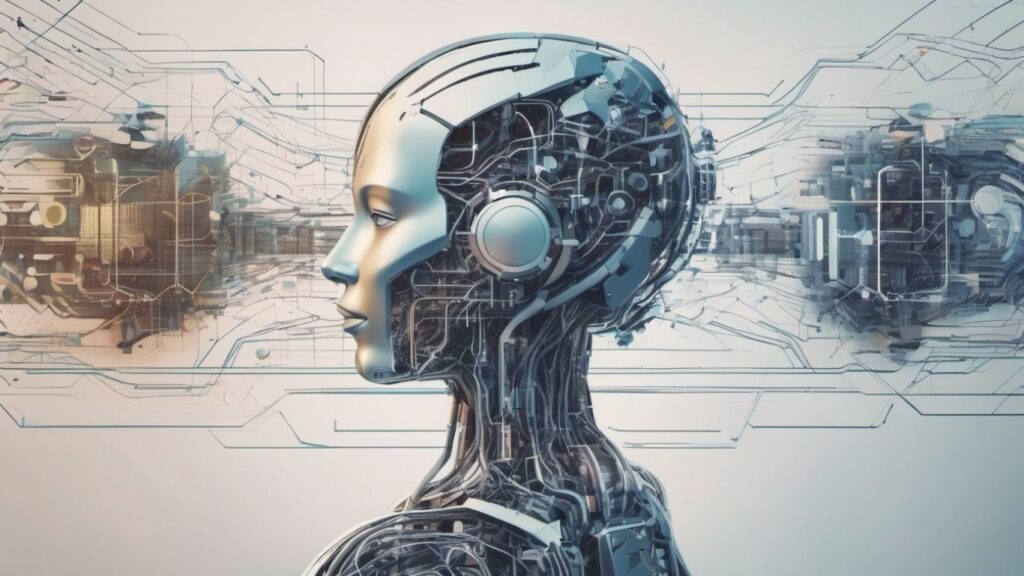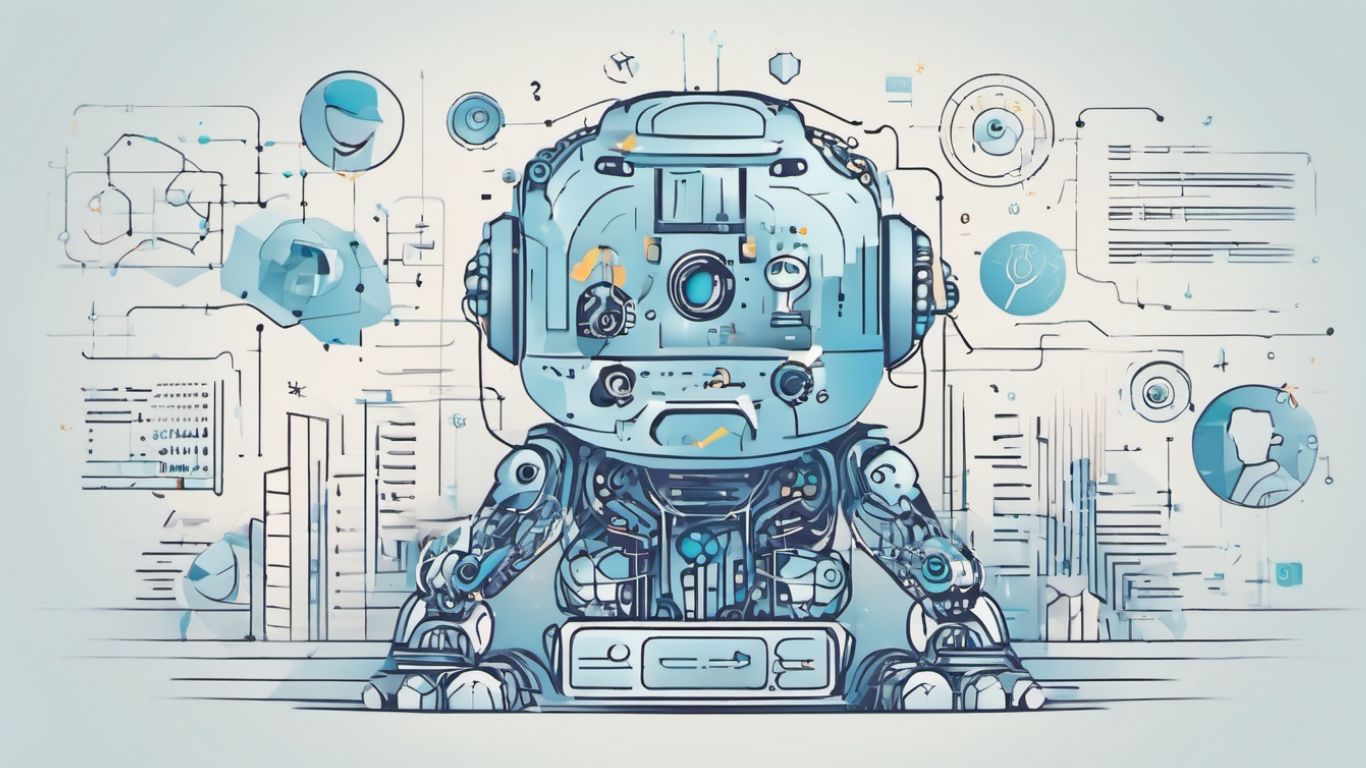Are you a beginner programmer, tech enthusiast, or data analyst eager to learn machine learning (ML) and artificial intelligence (AI)? You’re in luck. This guide is crafted to introduce you to the basics, help you understand key concepts, and provide practical projects to kickstart your Learning.
Understanding AI vs. Machine Learning
First, let’s clarify the difference between AI and ML:

- Artificial Intelligence (AI) is the broader concept of machines being able to carry out tasks smartly. It’s the science of making computers mimic human intelligence.
- Machine Learning (ML) is a subset of AI that uses algorithms and statistical models to perform tasks without explicit instructions, relying on patterns and inference instead.
Key Concepts in Machine Learning
Supervised, Unsupervised, and Reinforcement Learning
- Supervised Learning involves training a model on labeled data, where the output is known. Examples include classification and regression tasks.
- Unsupervised Learning deals with unlabeled data. The model tries to learn the patterns and structures from the data. Standard techniques include clustering and association.
- Reinforcement Learning is about training models to make sequences of decisions by rewarding positive outcomes and penalizing negative ones.
Basics of Data Preprocessing and Feature Engineering
- Data Preprocessing includes cleaning the data, normalizing it, and handling missing values.
- Feature Engineering involves creating new features from existing data to improve model performance.
Model Selection and Evaluation Metrics
- Model Selection is choosing the best model architecture and algorithms based on the problem.
- Evaluation Metrics help assess the performance of your model. Standard metrics include accuracy, precision, recall, F1 score, and AUC-ROC.
Introduction to Neural Networks and Deep Learning
Neural networks, consisting of layers of interconnected nodes (neurons), are the backbone of deep Learning. Deep Learning involves training these neural networks on large datasets to perform complex tasks like image and speech recognition.
Ethical Considerations in AI
AI’s increasing global influence means ethical considerations are more important than ever. Issues range from algorithm bias to the potential for job displacement.
Practical Examples and Projects

- Recommendation System: Develop a simple recommendation system using collaborative filtering for a movie or book platform.
- Spam Email Filter: Build a primary spam email filter using algorithms like Naive Bayes or Support Vector Machines.
- Customer Segmentation: Create a customer segmentation model for an e-commerce platform using k-means clustering.
- Chatbot: Train a chatbot using natural language processing to understand and respond to customer queries.
- Image Recognition: Implement a basic image recognition system using convolutional neural networks (CNNs).
Practical Exercises and Challenges
- Collect and preprocess your data for a machine learning model, applying techniques like data cleaning, normalization, and feature selection.
- Experiment with different algorithms and hyperparameters, comparing their performance and understanding trade-offs.
- Extend the recommendation system to include content-based filtering and evaluate its accuracy.
- Enhance the spam email filter by implementing real-time Learning to improve predictions over time.
- Explore unsupervised Learning for anomaly detection in datasets, such as identifying fraudulent transactions.
- Build a primary neural network using only numpy, understanding forward and backward propagation.
- Create a blog post or presentation on an AI-related ethical issue and its implications.
Essential Resources for Further Learning

- Books
- “Introduction to Machine Learning with Python” by Andreas C. Müller and Sarah Guido
- “Hands-On Machine Learning with Scikit-Learn, Keras, and TensorFlow” by Aurélien Géron
- Online Courses
- Coursera’s “Machine Learning” course by Andrew Ng
- Udemy’s “Data Science and Machine Learning Bootcamp” by Colt Steele and Ian Schoen
- Communities and Platforms
- Kaggle
- Towards Data Science
- r/MachineLearning on Reddit
- Stanford University’s CS229 “Machine Learning” course materials
- DeepLearning.AI
FAQs
What is the difference between AI, ML, and Deep Learning?
- Artificial Intelligence (AI) is the overarching concept of machines simulating human intelligence to perform tasks.
- Machine Learning (ML) is a subset of AI that focuses on enabling machines to learn from data without being explicitly programmed.
- Deep Learning is a further subset of ML that uses neural networks with many layers (deep neural networks) to analyze data and make intelligent decisions.
How much math do I need to know to start with ML and AI?
A solid understanding of introductory algebra, statistics, and probability is essential. As you progress, familiarity with linear algebra, calculus, and more advanced statistics will be beneficial, especially for deep Learning.
What programming languages are commonly used in ML and AI?
Python is the most widely used language due to its simplicity and the many ML libraries, such as TensorFlow, Keras, and Scikit-Learn. The ML and AI community also uses R, Julia, and MATLAB.
Do I need a powerful computer to start learning ML?
While having a powerful GPU can speed up the training of complex models, you can start learning ML with a standard computer. Many online platforms, such as Google Colab, provide free resources for running ML experiments in the cloud.
How can I ensure my ML model is not biased?
Ensure that your training data is representative of the diverse populations you intend to serve. Regularly evaluate the model for any biases and update the dataset to reflect changes in the real world. Understanding and mitigating bias is a critical aspect of ethical AI development.
What is overfitting, and how can I avoid it?
Overfitting occurs when a model learns the training data too well, including its noise and outliers, resulting in poor performance on new data. You can avoid overfitting by using techniques like cross-validation, pruning, and regularization and ensuring you have ample training data.
Where can I find datasets to practice ML skills?
There are numerous online repositories where you can find datasets, such as Kaggle, UCI Machine Learning Repository, Google Dataset Search, and Data.gov. These platforms offer a variety of datasets suitable for different types of ML projects.
How long does it take to become proficient in AI and ML?
The time varies depending on your background and the depth of knowledge you wish to acquire. Many people gain a solid foundational understanding with dedicated effort in 6 months to a year. Continuous Learning and practice are essential as the field is rapidly evolving.
What are some common challenges faced when implementing ML models?
Common challenges include:
- Gathering and preprocessing high-quality data.
- Choosing the suitable model.
- Tuning hyperparameters.
- Ensuring the model generalizes well to new data.
- Addressing ethical concerns such as fairness and transparency in AI.
Conclusion
Starting with machine learning and AI may seem daunting, but with the right resources and guidance, you can quickly gain proficiency and build impressive projects. Remember, the key to mastering these technologies is continuous practice, experimentation, and curiosity.











